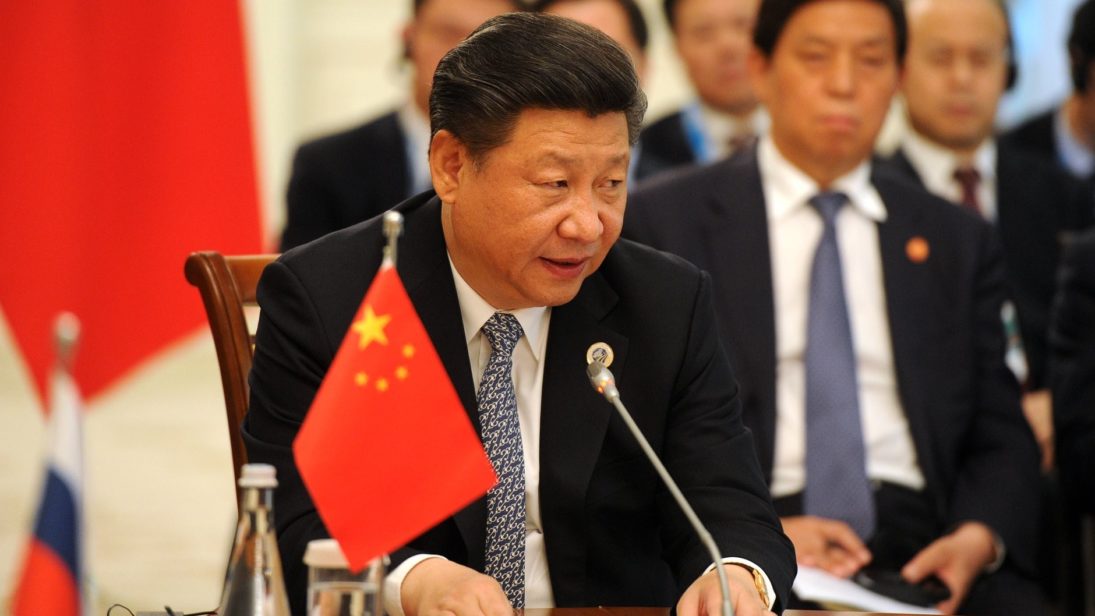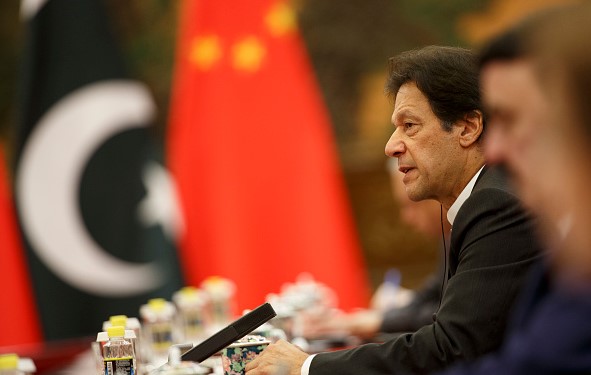
The suicide bombing of an Indian paramilitary convoy on February 14th in Pulwama, Jammu and Kashmir (J&K) that killed at least 40 personnel drew condemnation and outrage both domestically and globally. This attack was claimed by the Pakistan-based terrorist group Jaish-e-Mohammed (JeM). JeM has been carrying out multiple terrorist attacks in India since 2001. However, its leader, Masood Azhar, continues to evade international sanctions at the United Nations Security Council Resolution 1267 committee owing to China’s constant veto, which stands on rather frivolous grounds. In the aftermath of Pulwama, China signaled that its stance on Azhar remained unchanged–it would not support India’s bid to designate the JeM chief an international terrorist.
Many analysts assert that China has continued to maintain its position on Azhar because it wants to shield its “all weather ally” Pakistan from international condemnation, as JeM is widely believed to be backed by the Pakistani military establishment. However, China’s response to the Pulwama crisis goes deeper than mere concerns over protecting an ally. Rather, it is concerned with protecting its stakes in Pakistan and Afghanistan, and avoiding reprisals from Islamist groups.
China’s Prime Concern: An Islamist Backlash
JeM was formed in 2000 after Azhar was released a year earlier in Afghanistan (facilitated by al-Qaeda and the Taliban) from Indian custody. After 9/11, Azhar’s JeM carried out the 2001 Indian Parliament attack as a favor to al-Qaeda so that Pakistan would relocate its forces from the Durand line to the India-Pakistan border in response to India’s Operation Parakaram, in which India mobilized troops to the India-Pakistan border in response to the Parliament attack for a possible invasion. This allowed top Al-Qaeda and Taliban leaders to escape American bombing and special operations campaigns in Tora Bora by crossing over to Pakistan.
China’s motivation behind its current policies in dealing with Pakistan-based terror groups stems from its internal security concerns. This is because China faces a significant challenge from the Uighur Muslim community in its largest province of Xinjiang close to Pakistani and Afghan borders. Moreover, China understands that JeM and its cadres are connected to the wider global Islamic jihad. The fact that the suicide bomber who carried out the Pulwama attack mentioned the Taliban’s supposed victory against the United States as his inspiration and how an Afghan jihad veteran was infiltrated into J&K to supervise the attack further vindicates this. Since China faces unrest in its Muslim populated Xinjiang province where the flagship Belt and Road Initiative project, the China-Pakistan Economic Corridor (CPEC), begins, it does not want to antagonize Islamist elements in Pakistan and fuel extremist and separatist tendencies among the Uighurs.
Since China faces unrest in its Muslim populated Xinjiang province where the flagship Belt and Road Initiative project, the China-Pakistan Economic Corridor, begins, it does not want to antagonize Islamist elements in Pakistan and fuel extremist and separatist tendencies among the Uighurs.
China already spends a great deal of resources in maintaining a surveillance state in Xinjiang. Its internal security budget reportedly surpasses its defense budget. The Chinese government has put approximately one million Uighurs in “re-education camps” in Xinjiang, where former detainees say they were made to undergo extensive indoctrination as well as a study of Communist Party propaganda. The camps are part of Chinese government measures to deal with what it says is a rising tide of extremism.
Since the days of the Afghan resistance against the Soviets, Beijing has been cautious while playing its cards so that it backs the right players that supports its interests. Its current engagement with the Afghan Taliban and their Pakistani factions is a continuation of that policy. China is quite concerned about instability in Afghanistan spilling over into Xinjiang and would like to work with Pakistan and the Taliban to avoid such a scenario. Chinese workers and assets have already faced multiple attacks from Balochi separatist groups in Pakistan, it therefore does not want the added brunt of facing attacks from terrorists linked to JeM.
After 9/11, Pakistan joined the U.S.-led global war on terror. Some terrorist groups in Pakistan – especially JeM – were enraged by what they saw as President Pervez Musharraf’s decision to betray their Taliban and jihadist comrades. JeM was linked to many terrorist incidents thereafter, some of which affected China. These included a 2007 incident between Pakistani security forces and the extremists occupying the Lal Masjid in Islamabad, as a result of which seven Chinese citizens were taken hostage and later released. This incident, as well as another a few weeks later in which three Chinese nationals were killed in Peshawar, allegedly prompted the Chinese government to place pressure on Pakistan to better protect Chinese citizens residing in the country. Additionally, in 2011, according to Punjab Police records, JeM was also involved in an attack on a Pakistan Air Force (PAF) bus.

There may also be concerns in Pakistan that if Azhar’s designation as a global terrorist is not prevented, some terrorist groups may turn against the Pakistani state. After an attack on the Indian Air Force’s (IAF) Pathankot airbase in 2016, Azhar warned the Pakistan government that action against JeM would be “very dangerous” for the country. It is notable that CPEC passes through Pakistani-administered Kashmir, and through Khyber-Pakhtunkhwa (KP) where the IAF claims to have conducted preemptive airstrikes against JeM camps on February 26th. Chinese companies have also reportedly signed deals worth $20 billion with the KP provincial government for infrastructure projects.
Grasping China’s Stance and Role
In recent years, Pakistan has seemingly directed JeM to carry out attacks primarily against security forces in Kashmir to show that India’s muscular policy in J&K is failing. The Chinese state-run Global Times used this pretext to say that India should reassess its policies in J&K, instead of blaming either China or Pakistan for terrorism in Kashmir. Though China and the other P5 nations released a statement on February 21 condemning JeM and the Pulwama attack, Beijing still has not publicly signaled any desire to remove its veto on Azhar’s terrorist designation or ask Pakistan to cease its support for terrorist outfits.
In the aftermath of the air strikes conducted by the IAF in Balakot in KP, Beijing asked both sides to “exercise restraint,” but did not condemn the Indian strikes within Pakistani territory. At the Russia-India-China trilateral in Wuzhen, China on February 26th, Chinese Foreign Minister Wang Yi emphasized that both countries should work together to fight and eradicate terrorism. The three countries also discussed the creation of the Comprehensive Convention on International Terrorism (CCIT) proposed by India. The CCIT is a framework that would make it legally binding for all signatories to deny funds and safe havens to terrorist groups.
China’s increased multi-billion dollar stakes in Pakistan, the strategic relationship that exists between the two, and China’s large trade volume with India makes an escalating crisis between India and Pakistan inimical to Beijing’s interests.
After the PAF conducted retaliatory air raids into India on February 27th, the Chinese Foreign Ministry released a statement later that day saying that sovereignty should be adhered to and China is against activities that violate international norms. This was China’s first outright criticism of Indian military action in Pakistan in the preceding 48 hours. In the PAF air raid, both India and Pakistan lost an aircraft each, with one IAF pilot ending up in Pakistani custody and later released as an overture of peace. India and Pakistan had both taken the present crisis to the international community, including to the United States, China, and the Organization of Islamic Countries (OIC). It can be speculated that backchannel diplomacy may have taken place to de-escalate the crisis.
An analysis of past India-Pakistan crises shows that as time passed, China has assumed the role of third party mediator. Chinese responses to various South Asian crises have evolved depending on China’s perception of the threat level to its interests. Today, China’s increased multi-billion dollar stakes in Pakistan, the strategic relationship that exists between the two, and China’s large trade volume with India makes an escalating crisis between India and Pakistan inimical to Beijing’s interests.
***
Image 1: The Kremlin
Image 2: Thomas Peter via Getty


